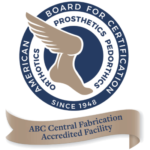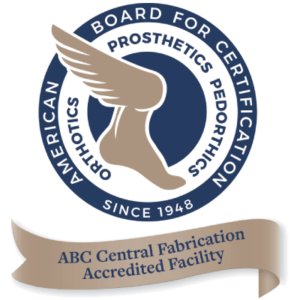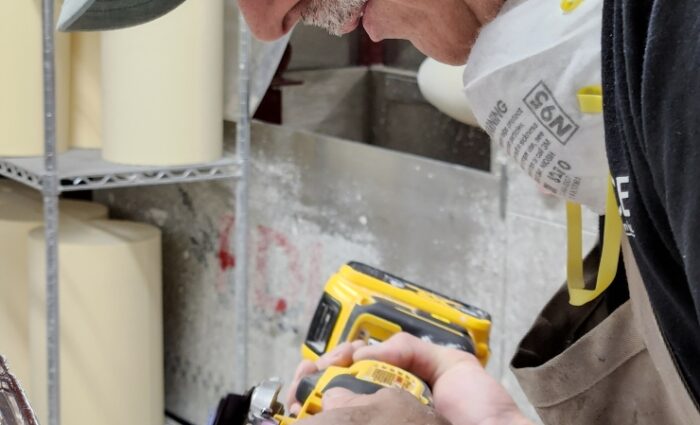What to do if a prosthetic is damaged.
Prosthetics have certainly come a long way over the last few decades. They can now be produced much more quickly and will last longer than they ever have in the past. Patients can also function a lot more easily and use them in ways that even doctors of the past could never have dreamed of.
Did we mention that they’re much more durable? That’s one of the best things about modern prosthetic fabrication, but you must keep in mind that they’re not indestructible. Prosthetic devices are used on a daily basis, which means they can be damaged.
Let’s go over some simple facts about prosthetics and how damage to a patient’s device should be handled.
How Long Can Patients Expect a Prosthetic to Last?
Thanks to advances in the way they’re constructed in terms of both technology and materials, prosthetics last much longer than they have in the past. Prosthetics are meant to be used on a daily basis, so they definitely wear out. As a general rule, a quality prosthetic that’s used every day and taken care of will usually last a few years, depending on a variety of factors.
How Patients Can Prevent Damage to Their Prosthetic?
There are times when a prosthetic may become damaged, and there’s absolutely nothing a patient can do about it, especially if a patient falls or otherwise injures themselves. However, there are some things they can do as part of a regular routine to help prevent instances of damage:
Daily Examinations
The first way that patients can prevent damage to their prosthetic is with daily examinations. Although this can become tedious, by giving their prosthetic a quick once-over each day before going to bed, they can pinpoint small issues before they become big problems. Then, if they notice that something’s wrong, the prosthetic might be able to be repaired instead of replaced.
Regular Cleanings
In some cases, a lack of cleaning can cause the prosthetic to become damaged. This is one of the reasons why a patient should clean the apparatus at least once per day to remove any dust or other such debris. By doing so, the prosthetic is more likely to last much longer.
Knowing the Limits
When a patient first begins to use a prosthetic, they’ll typically be very careful with it. But as time goes on and they become more acclimated to its usage, they might push it a bit too much. A patient needs to always be aware of their prosthetic’s limitations and what they’re able to do with it.
How Grace Helps Prevent Damage to a Prosthetic
Grace obviously can’t be there with the patient to help prevent damage. What we can do is create a prosthetic with superior durability.
Here are three ways that we make that happen:
Advanced Technology
The use of advanced technology helps prevent damage to prosthetics by creating a high-quality product. It begins with the use of an advanced CAD/CAM system that designs the prosthetic and then moves to 3D printing and the use of a state-of-the-art carver. All of this works together to ensure the durability and accuracy of the design and provide quick production without sacrificing quality.
High-Quality Materials
Grace doesn’t produce any prosthetic device that uses anything less than the highest quality materials. Whether a part calls for titanium, steel, high-grade plastic, or a mixture of multiple materials, we always use the very best. This helps prevent damage from occurring through normal wear and tear and extensive usage.
Extensive Product Testing
Grace believes in every product that goes out its doors, in large part because of the faith that we have in our amazing designers. But we make sure that each one of our products goes through extensive testing. This helps ensure that our prosthetic devices last as long as possible and that issues are kept to a bare minimum.
What a Patient Should Do If a Prosthetic Is Damaged
No matter how resilient a patient is or how well-constructed a prosthetic may be, damage is sometimes going to happen. If a patient has a damaged prosthetic, here’s what he or she should do:
Remove the Prosthetic
If a patient realizes that damage has occurred, the first thing they should do is remove the prosthetic. That’s because wearing a damaged prosthetic could actually be harmful if it rubs up against their skin.
Call a Doctor for Advice
The next thing they should do is call their doctor for advice. Of course, the first piece of advice that the doctor will probably give them is to remove the prosthetic. They should explain the precise issue to the doctor and then follow his or her instructions to the letter.
Schedule a New Fitting
The patient should then schedule a new fitting as soon as possible. This is probably what the doctor will suggest during a consultation. The good news is that, given today’s advanced technology, the information for the previous fitting will still be stored, so a new prosthetic can be produced very quickly if that’s what needs to be done.
Contact Grace Prosthetic to Replace a Damaged Orthotic or Prosthetic
Grace Prosthetic Fabrication can assist you with replacing a patient’s damaged prosthetic. If you have any questions about our services or would like to place an order, give us a call at (800) 940-5347 today.






